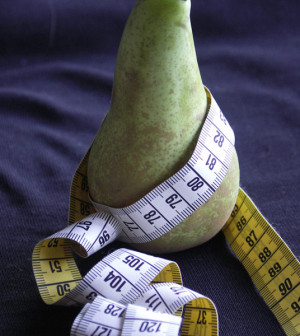- Skip Storing This Everyday Product in the Fridge Door
- Green Tea + B3 Pairing May Boost Brain Health
- Navigating Your Midlife Crisis: Embracing New Possibilities
- City Raccoons Showing Signs of Domestication
- Mapping the Exposome: Science Broadens Focus to Environmental Disease Triggers
- One Week Less on Social Media Linked to Better Mental Health
- Your Brain Changes in Stages as You Age, Study Finds
- Some Suicide Victims Show No Typical Warning Signs, Study Finds
- ByHeart Formula Faces Lawsuits After Babies Sickened With Botulism
- Switch to Vegan Diet Could Cut Your Greenhouse Gas Emissions in Half
Half of Americans’ Calories Come From ‘Ultra-Processed’ Foods

More than half of the average American diet is composed of so-called ultra-processed foods, a new study finds.
And these foods make up 90 percent of the excess sugar calories that Americans consume, the researchers reported.
Ultra-processed foods are concoctions of several ingredients, including salt, sugar, oils and fats. They also contain chemicals not generally used in cooking, such as flavorings, emulsifiers and other additives designed to mimic real foods, the researchers said.
“Decreasing the consumption of ultra-processed foods may be an effective way of reducing the excessive added sugar intake in the U.S.,” said lead researcher Euridice Martinez Steele. She’s from the department of nutrition in the School of Public Health at the University of Sao Paulo in Brazil.
Ultra-processed foods include sodas, sweet or savory packaged snacks, candy and desserts, packaged baked goods, instant noodles and soups, and reconstituted meat products, such as chicken and fish nuggets, she said.
By contrast, “processed” foods are foods made with added salt, sugar or other substances normally used in food to unprocessed or minimally processed foods, such as canned foods or simple breads and cheese, the study authors said.
Too much sugar increases the risk for weight gain, obesity, type 2 diabetes, heart disease and tooth decay, Steele said.
“There is one relatively simple way to avoid excessive added sugar — not replacing real food, such as minimally processed foods and freshly-prepared dishes and meals, with ultra-processed food and drink products,” she said.
In other words, drink water, pasteurized fresh milk and freshly squeezed fruit juices. And, don’t drink soft drinks, sweetened milk drinks and reconstituted, flavored fruit juices.
People should avoid products that don’t require preparation, such as packaged soups, instant noodles, prepared frozen dishes and sandwiches, cold cuts and sausages, ready-to-eat sauces and cake mixes, Steele said.
The report was published online March 9 in the journal BMJ Open.
The researchers reviewed information from more than 9,000 people. They all took part in the 2009-10 National Health and Nutrition Examination Survey. Study volunteers provided information about their diets.
The researchers found that added sugars make up more than one in five calories in the average ultra-processed food product. That’s as much as eight times higher than the calories from added sugars found in other foods, Steele said.
The recommended upper limit of calories from sugar is 10 percent of daily calories, the researchers noted. In people who ate the most ultra-processed food, more than 80 percent exceeded the upper limit of sugar.
Only people who ate the least ultra-processed foods had below the recommended levels of sugar, the researchers said.
“What many consumers do not realize is that added sugars come in many forms in many highly processed foods that include desserts and sweets, but that also include foods like sausages, cereal bars, ketchup, French fries, salad dressings and frozen pizzas,” said Samantha Heller. She’s a senior clinical nutritionist at New York University Medical Center in New York City.
This survey highlights the extraordinary amount of ultra-processed foods in the American diet, and the over-the-top amount of sugar and salt and fat found in these foods, she said.
One serving of a frozen French bread pizza contains 830 milligrams of salt, four different kinds of added sugars, trans fats and 21 grams of total fat, Heller pointed out.
“Another, more nefarious and insidious problem lurks in these foods as well,” she said. “Ultra-processed foods are chemically designed by the food companies to induce cravings for those foods, and sugar, fat and sodium are a big part of those formulas.”
The only way to break the chemical food cravings, and slash the intake of chemicals, calories, added sugars, fat and sodium, is to make more food at home from scratch, Heller said.
“If you made your own homemade French bread vegetable pizza, which would not take much time, you would use about 15 unprocessed or minimally processed ingredients, compared with the more than 60 ultra-processed ingredients and chemicals in the frozen food version,” she said.
Homemade pizza would likely have almost no added sugar, a fraction of the salt, no trans fats and much less fat overall, Heller said.
“You will also know exactly what’s in the dish you and your family are eating for dinner tonight,” she said. “A bit of planning and a pantry stocked with healthy foods goes a long way to saving time, money and, more importantly, your health.”
More information
For more information on a healthy diet, visit the U.S. Centers for Disease Control and Prevention.
Source: HealthDay
Copyright © 2025 HealthDay. All rights reserved.










